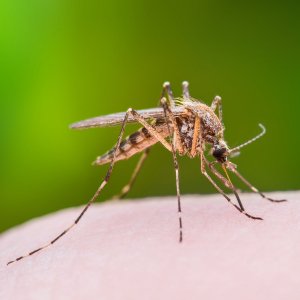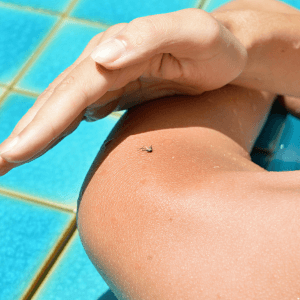There’s no questioning that mosquitos are dangerous insects. When it comes to outdoor entertainment, it sometimes seems like there’s no escaping from their bite. In fact, they are so prevalent, especially in South Florida, that it can become difficult to separate mosquito myth from reality. Today, let’s look at five common myths about mosquitos.
All Mosquitos Carry Diseases
You’ve likely heard this mosquito myth before. The origins of this particular myth are unclear, but it might be that intentions were pure. Specifically, mosquitos can carry some dangerous diseases and getting bitten by one is never something you should brush off. However, not all mosquitos carry diseases, and more times than not a mosquito bite is just going to cause discomfort, not illness. Still, it’s important to protect yourself from mosquitos as their bites can be severe.
Dryer Sheets Make Good Mosquito Repellents
This one is about as plausible as it sounds -not very. Dryer sheets can be great for keeping your linens smelling fresh after a wash, but they don’t really have any impact on insect repellent. Instead, putting out dryer sheets to keep mosquitos away is going to have no real impact. Rather than trying these supposed “life hacks” your best bet is to stick with established mosquito repellents around your home.
Mosquito Predators – Bats and Purple Martins
Another common mosquito myth comes from two flying predators and their effects on population control. Specifically, the purple martin species of bird and the common bat. The myth suggests that both of these species will consume hundreds of mosquitos each hour. Instead, scientific evidence on the subject shows that purple martins are much more indiscriminate feeders. In fact, it’s suggested that mosquitos make up only about three percent of the diet for these birds. Similarly, bats feed more on larger insects, like the dragonfly -which is, coincidentally, a predator of the mosquito.
Electronic Repellents are Most Effective
A relatively new trend in the pest control effort is to use the power of sound waves and other electronic means to repel pests. While this can have an impact on certain pests, electronic mosquito repellents are no more effective than the above-mentioned dryer sheets. In reality, the only effective way to keep mosquitos away is to use a scientifically-formulated insect repellent.

Bug Zapper Will Take Care of Mosquitos
Offering another failed control method, bug zappers will certainly kill their share of insects. However, most of these insects will not be mosquitos. Instead, the most common victims include moths and beetles. Using a bug zapper will likely have no noticeable impact on the number of mosquitos in your yard.
Other Myths about Mosquitos
You’ve likely heard other myths about mosquitos as well. Here at SWAT Mosquito Systems®️, we look to bust these myths and provide you only with the facts. This is why we offer powerful and effective mosquito misting systems to keep biting insects at bay and protect your family from the hassle and threat of mosquitos, no-see-ums, and other outdoor insects. The next time you hear a mosquito myth, remember you know better. And, when you’re ready to protect your home, we’re here to do whatever it takes. Call us at 866-900-SWAT (7928).
 Ways to Treat Mosquito Bites
Ways to Treat Mosquito Bites